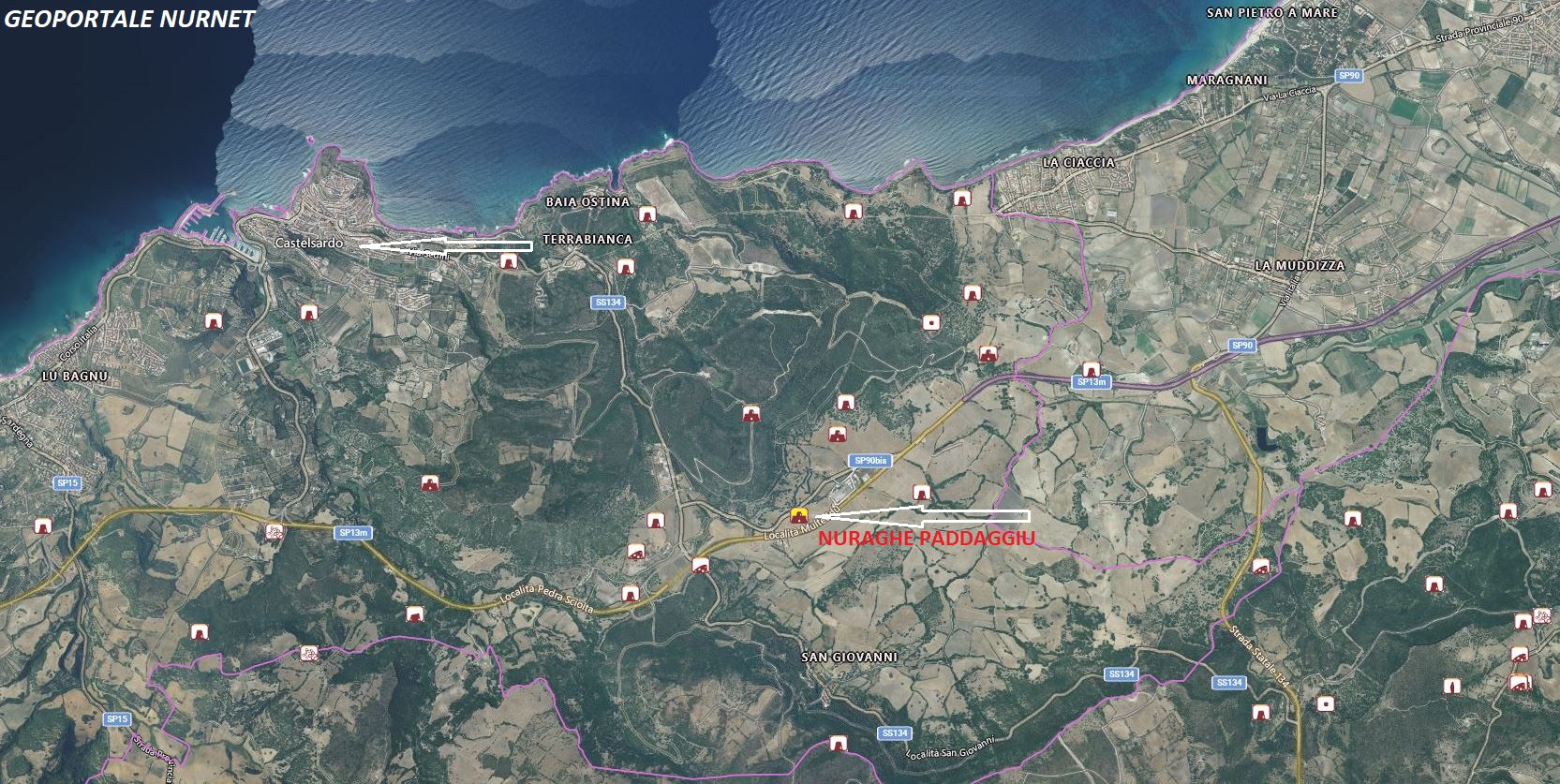The nuraghe Paddaggiu, which in Sardinian means “haystack,” often mistakenly called Su Tesoru or Sa Eni, is located on the road connecting Castelsardo with Valledoria, not far from the “Elephant Rock.” It represents the most significant find in the area dating back to the nuragic period, which developed in Sardinia from the Bronze Age (1800 BC) until the 2nd century BC during the Roman era.
The Nuraghe, built on a hill, as was customary at the time to have an unobstructed and complete view of the surroundings, originally consisted of a main tower, with the characteristic “tholos” roof (that is, a false vault obtained from the progressive narrowing of the circle of stones), a bastion with two lateral towers, and a thick surrounding wall that also included the area occupied by the village of stone huts covered with thatched roofs.
From this great original complex, we have the remains of the main tower, in excellent condition, a stretch of surrounding wall of about 27 meters, and the base of a hut of about 6 meters in diameter. In addition to numerous ceramic finds that have been essential for accurate dating of the monument.
The tower of the nuraghe Paddaggiu, which measures about 11 meters in diameter at the base and 8.5 meters in remaining height, housed two rooms, located on two overlapping floors connected by an internal staircase. An entrance corridor covered by transverse slabs, the characteristic niche on the right of the corridor, and the internal staircase on the left that winds up to the top of the tower are well preserved. The nuraghe also had a wooden balcony, which has, however, been destroyed.
(Municipality of Castelsardo)
The photos of the nuraghe Paddaggiu or Paddaju are by: Andrea Mura – Nuragando Sardegna, Gianni Sirigu, Marco Cocco, Francesca Cossu, and Nuraviganne.










